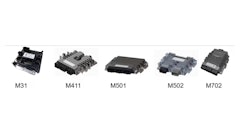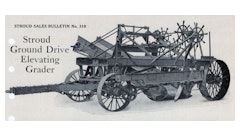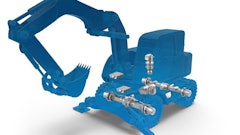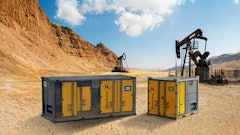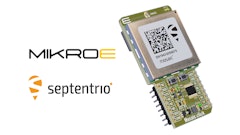
responses submitted by Mike Ott, Co-Founder & CTO, Left Hand Robotics
Data, IoT & Connectivity
How will the role of the Internet of Things (IoT) and data continue to progress in the coming years?
Many companies struggle to quantify the value of data in our industry but one thing seems clear…data IS valuable. Outdoor power equipment manufacturers continue to expand the amount of “connected” equipment they are bringing to market and there is no reason to believe this will slow down in the near future. Some of the larger OEMs will continue to develop and roll out this “connected” equipment themselves while other smaller, more niche OEMs will look to partner with technology providers who will handle the connectivity capabilities for them.
Do you see a path toward the use of artificial intelligence, virtual reality or augmented reality in your manufacturing processes, or even on-board the vehicle itself?
Absolutely. Left Hand Robotics offers autonomous equipment solutions that will continue to expand their use of artificial intelligence (AI) on-board the vehicles. AI will aide in a number of areas including improved safety, better navigation and an overall improvement to the user experience. Our solutions operate in challenging outdoor environments but through the use of sophisticated artificial intelligence software, our machines will be able to learn about their surroundings as they operate and better react to situations they encounter as they perform their assigned tasks.
How do you see connectivity and machine learning changing the vehicle landscape in the next decade?
I think we’ll continue to see a steady expansion of “connected” machines from OEMs and following that wave by several years, expanded use of AI and machine learning. Even companies who aren’t expert in these areas are beginning to recognize the value in data, especially real-time data made available through the use of “connected” machines so I think that wave will accelerate rather quickly. Also helping facilitate this expansion are the number of companies offering a way for OEMs to add these capabilities with very little effort from their internal teams and at a very reasonable cost. From an AI/Machine Learning perspective, it is more difficult for many OEMs to envision how those technologies could add value to their machines and given the added difficulty and cost in bringing those capabilities to market, we’ll likely see a delay in those technologies becoming widespread in anything but highly specialized equipment for a number of years.
What challenges remain or lay ahead for the continued adoption of data, IoT and connectivity related technologies or systems?
I think the main challenge for the adoption of all these technologies is the recognition of the ROI (return on investment)…the value proposition. Unless and until end-customers understand the value they gain from these technologies, they will be unwilling to pay extra for the equipment. Especially on lower cost equipment (a $10,000 ZTR mower for example), the cost to add the technology to make that machine “connected” or autonomous-enabled becomes a higher percentage of the overall machine cost and represents a meaningful cost adder to the end-customer. If that customer doesn’t immediately understand the value of the data (in the case of “connected”) or the reduced labor (in the case of autonomy), they will be far less likely to spend the extra money up front on the equipment.
Automation & Smart Systems
What impacts are you seeing automation playing on the heavy equipment and vehicle industries?
It’s clear that most of the heavy equipment OEMs are investing in automation. Safety, precision, operator comfort and functionality, and even autonomy seem to be the primary objectives of these advancements. It seems that every week, someone is announcing new machine capabilities aimed at delivering one or more of the above-mentioned benefits for their customers and there appears to be no reason to think this will slow down anytime soon.
What is needed to further progress equipment and vehicle automation?
I feel there are two main things required to really see vehicle automation take off. First, better and more affordable components and second, more companies offering those capabilities to OEMs who are unable to deliver them on their own. Components - Many of the advancements we’re seeing announced on a regular basis are the result of these better and more affordable components becoming available to OEMs (joysticks, lidar sensors, cameras, electronically driven hydraulics, etc.) but much more needs to be done in this area. While many higher-capability products are available, the price of those components make them impractical for many machines still. Technology Providers – While the “big boys” have their own in-house engineering teams to develop and implement vehicle automation capabilities, smaller OEMs without the ability to staff large software/robotics/electrical engineering departments are frequently relegated to relying on component vendors to provide them with support in delivering technology advancements. In order for integrated vehicle automation capabilities to really take off, even smaller OEMs need to get involved. These smaller OEMs are going to need technology partners who are able to help them design and deliver these capabilities. Left Hand Robotics and our BOLT platform offering is one example of this. After developing and utilizing our autonomous navigation, obstacle detection, monitoring, site and fleet management capabilities on our own machines for over 4 years now, we’ve launched a platform product that allows equipment OEMs of all kinds to partner with us so they can rapidly deliver these same capabilities on their machines. As more OEMs learn about these kinds of offerings, we’ll begin to see even faster expansion of vehicle automation in our industry.
How do you see inclusion and development of telematics systems continuing to progress in the 5-10 years?
Much like vehicle automation, telematics systems will expand in the coming years as component prices come down and OEMs find affordable ways to deliver these capabilities to their end customers. The end customers will continue to be “educated” on the value provided by these systems and as that collective understanding of the value grows, the tolerance for higher-priced equipment will grow and OEMs will be pushed by their customers to deliver those capabilities. Exactly how quickly this expansion happens will depend on the speed upon which that cycle happens.
What do you see as the “next big thing” in automation and smart systems?
I think the “next big thing” won’t actually be a specific technology or capability as it will be a business strategy. I think the next big thing will be widespread adoption of equipment OEM/technology company partnerships to rapidly deliver capabilities to end customers. Partnerships like this allow the OEM to focus their energy and R&D capital on their equipment while the technology partners can focus on the technology. As these partnerships begin to have an impact in the market, I think the momentum will continue to grow as other OEMs are “pressured” to do the same or fall out of favor in the market by not having the latest technology available on their equipment. We at Left Hand Robotics are already seeing this “partnership” concept gain traction since the introduction of our BOLT platform technology this past spring. Even through the economic challenges presented by the COVID-19 crisis, companies continued to reach out to learn more about how we could work with them to deliver capabilities they could never dream of developing and implementing on their own.
READ MORE: State of the Industry 2020
Challenges & Opportunities
What are the biggest challenges facing the industry currently, or do you see the industry facing in the coming years?
For the foreseeable future, a shortage of labor appears to be the biggest challenge facing many segments of our industry. This could change based on the political changes that could happen in the next 6-12 months but exactly how quickly that problem can be addressed remains to be seen.
What are some of the biggest opportunities you see in the industry?
I think that the biggest opportunities in the near future in at least some segments of the industry have to do with on-board smart systems including safety, operator assistance, autonomy, etc. With the rapid expansion of component and software providers and capabilities, costs should continue to come down and capabilities should continue to increase making adoption much more likely. OEMs who implement the right technology can directly help their customers address the challenges associated with the shortage of labor, creating a win-win situation.
Are there any technologies or trends which you are currently excited about in the heavy-duty vehicle industry, or most looking forward to seeing in the coming years?
Selfishly, I’m excited about autonomous operation of outdoor power equipment. Indoor “robotics” have already become pretty well established but the added challenges of operation in the outdoors has proven to be a significant challenge to technology companies. Better performance, reduced dependence on labor and increased safety are all benefits of highly capable autonomous systems. Platforms like BOLT from Left Hand Robotics and others offer OEMs a straightforward path to enabling their machines with these capabilities in a very short period of time. The tangential benefits offered by these systems only further justify the investment BOTH from the OEM and the end-customer perspectives.







